 Screnock Screnock "Walker's judges" is our effort to present information about Gov. Walker's appointees to the bench. The information is taken from the appointees' own judgeship applications. Sauk County Circuit Judge Michael P. Screnock is running for State Supreme Court in next year's election. His announced opponents are Madison attorney Tim Burns and Milwaukee County Circuit Judge Rebecca Dallet. Name: Michael P. Screnock Appointed to: Sauk County Circuit Court Appointment date: April 10, 2015 (Ran unopposed and elected to six-year term in 2016) Education: Law School – University of Wisconsin-Madison (Graduated December 2006) Undergrad – University of Wisconsin-Madison High School – Not listed Legal employment: 2007 - present – Attorney, Michael Best & Friedrich, Madison Summer 2006 – Summer associate, Michael Best & Friedrich Summer 2005 – Judicial intern, Judge John Anderson, Bayfield County Portions of 2004 and 2006 – Law clerk, Screnock & Screnock Ltd., Baraboo, Wis. Memberships: Wisconsin Bar Western District of Wisconsin Eastern District of Wisconsin Seventh Circuit Court of Appeals Legal experience as an advocate in criminal litigation, civil litigation, administrative proceedings: Drawing from my experience as a municipal government administrator, I have focused my advocacy on civil litigation and administrative proceedings in a wide variety of subject areas, including real estate and land use disputes, governmental regulation, assessment and taxation, public utility regulation, environmental law, and election law. At the local government level, I have represented clients in front of zoning boards and plan commissions, condemnation commissions, assessment boards of review and governing bodies. At the state level, I have represented clients in administrative proceedings before the Public Service Commission of Wisconsin, the Government Accountability Board, and the Division of Hearings and Appeals. With respect to civil litigation, the vast majority of the cases I have worked on have been amenable to disposition without trial. I have represented clients in state circuit court and federal district court. I also have participated in briefing numerous cases, including before the Wisconsin Court of Appeals, Wisconsin Supreme Court, and the Seventh Circuit Court of Appeals. Number of cases tried to verdict or judgment: Jury, 0; non-jury, 1; administrative bodies, 7. Cases on appeal: 12 Screnock explained all 12 of the appeals in which he was involved. Three of them involved Act 10, the law that stripped public employees of many of their collective bargaining rights. Screnock represented the Gov. Scott Walker and his administration. Those cases are detailed below. Case No. 2011AP765 State of Wisconsin v. Circuit Court for Dane County (consolidated with State of Wisconsin ex rel. Ozanne v. Fitzgerald) I participated as part of a team of attorneys that assisted the Department of Justice in its representation of the State of Wisconsin and Department of Administration Secretary Huebsch after the Dane County Circuit Court sought to enjoin the publication of 2011 Wisconsin Act 10 (the “Budget Repair Bill”). The two principal issues in the case were i) the authority of any court to intervene in the legislative process by enjoining the publication of an act and ii) the authority of any court to invalidate a legislative act due to an alleged violation of the open meetings law, when the relevant provisions are set forth in the Wisconsin Statutes and not set forth as an express limitation in the Wisconsin Constitution. I was heavily involved in the underlying research and the preparation of the original petition and subsequent reply brief filed with the Court. Case No. 12-1854 WEAC, et al. v. Scott Walker, et al. (Seventh Circuit Court of Appeals) Another Act 10 case. The state, again represented by Screnock and others, successfully appealed to the Seventh Circuit Court of Appeals. WEAC and numerous other public employee unions challenged Act 10 in federal court on Equal Protection and First Amendment grounds. The federal district court upheld the vast majority of Act 10’s provisions and invalidated two aspects of the Act: the requirement that unions representing general employees undergo annual recertification elections and the prohibition on the state utilizing payroll deductions to facilitate the payment of general employees’ union dues. The State appealed the district court’s decision to invalidate those provisions; the unions cross-appealed the district court’s denial of the balance of their claims. The Seventh Circuit Court of Appeals reversed the district court and upheld Act 10 in its entirety. 2012AP2067 Madison Teachers, Inc. v. Scott Walker, et al. Yet another Act 10 case. Madison Teachers, Inc., Public Employees Local 61, AFL-CIO, and individual public employees challenged Act 10’s revisions to the Municipal Employment Relations Act on state constitutional grounds, alleging violation of the rights of association, free speech, and equal protection, as well as the municipal home rule amendment (with respect to Act 10’s application to the Milwaukee pension system). The Dane County Circuit Court held that various provisions of MERA violated the rights of association, free speech, and equal protection; the circuit court also found a violation of the home rule amendment. The circuit court declared null and void those provisions of MERA that: prohibited collective bargaining on any subject other than the single issue of total base wages, required a local referendum to authorize an increase in total base wages that exceeds the CPI increase, required mandatory annual certification elections, prohibited the forced payment of union dues from nonmember employees, prohibited payroll deductions for union dues, and prohibited the City of Milwaukee from paying the employee share of pension contributions. The State appealed the circuit court’s decision to invalidate those provisions. The case was fully briefed to the court of appeals, which then certified the case to the Wisconsin Supreme Court. The Wisconsin Supreme Court reversed the circuit court and upheld Act 10 in its entirety. Representation of the State was a team effort shared by three attorneys in our firm and two assistant attorneys general. I was heavily involved in developing legal arguments, related research, and drafting the briefs filed in the circuit court and the court of appeals. Before briefing began in the Wisconsin Supreme Court, it was determined that the Department of Justice would handle the subsequent briefing and argument without outside assistance and I formally withdrew as counsel of record in October 2013. List and describe the two most significant cases in which you were involved: I participated in six different actions that involved various attacks on the validity of 2011 Wisconsin Act 10, commonly referenced as the "Budget Repair Bill", which made sweeping changes to the collective bargaining privileges of public sector employees. A select group of attorneys in our firm assisted the Department of Justice in defending the validity of Act 10 and I was heavily involved in developing legal strategy, researching related legal principles, and drafting briefs. In the course of this representation, we addressed significant legal issues, including numerous challenges based on multiple Equal Protection and First Amendment theories. The earliest actions regarding Act 10 seperately (sic) addressed the separation of powers implications of i) the Dane County Circuit Court enjoining the Secretary of State from taking steps to publish Act 10 and ii) a court invalidating legislation due to a legislative committee’s failure to observe public notice requirements set forth in a statute but not dictated by the Wisconsin Constitution. I was directly involved in cases decided by the Dane County Circuit Court, the Wisconisn Supreme Court, the US District Court for the Western District of Wisconsin, and the Seventh Circuit Court of Appeals. Ultimately, both the Seventh Circuit Court of Appeals and the Wisconsin Supreme Court issued decisions upholding Act 10 in its entirety. I was also actively involved in the first appellate action to test the limits of the Wisconsin Livestock Facilities Siting Review Board’s (LFSRB or the Board) authority. The Board was created as part of the state’s livestock facility siting and expansion law, which established statewide standards that apply in the event local governments issue zoning permits to concentrated animal feeding operations. Our firm represents Larson Acres, Inc., which was issued a permit with conditions by the Town of Magnolia in Rock County and appealed the validity of certain conditions to LFSRB. The Board struck down certain invalid conditions and upheld the balance of Larson Acres’ permit. The Town of Magnolia and certain citizens sought circuit court review of the Board’s determination and Larson Acres intervened. … The circuit court held that LFSRB exceeded its authority and remanded the case to the Board. Larson Acres and the Board both appealed that decision and the court of appeals reversed … the Wisconsin Supreme Court … affirmed the Court of Appeals. The Supreme Court's decision has statewide implications in the interplay between local permitting authorities and LFSRB. I worked collaboratively with another attorney in our firm on the briefs filed in the court of appeals and the supreme court. Involvement in judicial, non-partisan or partisan political campaigns in the last six years: None Professional or civic organizations, volunteer activities, service in a church or synagogue, or any other activities or hobbies that could be relevant or helpful to consideration of the application: I have been active in church and civic activities throughout my life, with my service often mirroring my sons' activities as they have grown and matured. In service to the local church, I served on the Board and Pastor Search Committee of Trinity Baptist Church in Reedsburg, Wisconsin and on the Board of Grace Bible Fellowship (Evangelical Free Church) in Washburn, Wisconsin. I currently serve as one of the lead ushers and play regularly in a brass ensemble at Door Creek Church in Madison. In service to youth, I have served as a Cub Scout leader, Boy Scout merit badge counselor, youth soccer coach and referee, Math Team coach for Reedsburg High School and Mock Trial coach for Marshall High School. Describe any pro bono legal work in the last five years: No answer on application Have you ever been a party to a lawsuit either as a plaintiff or as a defendant? If yes, please supply the jurisdiction and/or county, case number, nature of lawsuit, whether you were the plaintiff or defendant, and disposition of each lawsuit. On two occasions in 1989, while I was an undergraduate at UW-Madison, I participated in peaceful protests in Madison, Wisconsin. On both occasions, when asked to leave the premises I refused and was issued citations by the City of Madison. Both incidents resulted in cases in Dane County Circuit Court – Case No. 89 FO 410 and Case No. 89 FO 663. Both cases were resolved by pleas of No Contest to a charge of Trespass. I performed community service in lieu of a fine in both cases. Quotes: Why I want to be a judge — Throughout my career I have sought positions that have allowed me to utilize my talents in service to the community. After obtaining my MBA, I began working for the City of Reedsburg administering its community development program. My career in local government spanned nearly twelve years and included service to the City of Reedsburg in various capacities, service to the City of Washburn as its first city administrator, and service to the the City of Ashland as its finance director. I left full-time local government service to attend law school with the goal of continuing to use my talents to serve society. To that end, I sought employment with law firms that I believed would afford me the opportunity to be involved in cases that could ultimately have statewide impact. I was blessed to be offered a position with Michael Best & Friedrich LLP, where I enjoy those opportunities on an ongoing basis. In the past eight years I have had the opportunity to work on cases that have resulted in published decisions touching on a range of issues involving constitutional, environmental, and administrative law matters. In addition, I have worked on a number of other matters that will guide and shape the future actions of various state agencies. In short, my current position is all that I hoped it would be in terms of allowing me to use my talents in service to the community. I am not searching for an opportunity to leave my current position; rather, I see the current opportunity to serve Sauk County as a circuit court judge as a special and unique one. The City of Baraboo is my hometown. It is where I grew up, where I attended high school, and where my father has practiced law for the past 40 years. In fact, Judge Evenson was one of my mother's high school classmates. In addition, the City of Reedsburg is where I began my professional career, and our home in Reedsburg provided some of the earliest childhood memories for our (now adult) sons. With these strong and deep family ties to Sauk County, it would be an honor and a privilege to serve that community in such a significant and meaningful fashion. Best Wisconsin or U.S. Supreme Court decision in the last 30 years – State of Wisconsin ex rel. Ozanne v. Fitzgerald (2011) The Wisconsin Supreme Court issued its decision in State of Wisconsin ex rel. Ozanne v. Fitzgerald … under highly irregular circumstances, and the fallout from the Court’s handling of its release damaged the Court’s reputation in the public eye. That aspect of the Court’s decision is unfortunate. Nevertheless, two other aspects of the Ozanne decision are significant and positive – the separation of powers aspects of the decision and the speed with which the Court addressed a matter of significant statewide import. As background, the Ozanne case reached the Court in the form of a petition for supervisory writ or original action after the Dane County Circuit Court enjoined publication of Act 10 – the Budget Repair Bill – and thus prohibited the statewide implementation of the public sector collective bargaining reforms included in Act 10. The circuit court concluded that a legislative committee had failed to abide by Wisconsin’s Open Meetings Law and therefore determined that the Act was not properly adopted. During the proceedings, the circuit court enjoined the Secretary of State from publishing Act 10. The Supreme Court vacated all orders and judgments of the circuit court and declared them to be void ab initio (which means "from the beginning"). It reached this conclusion on two important, but related, separation of powers principles that affect the interplay between the judicial branch on the other two branches. By voiding the circuit court’s decision, the Supreme Court emphatically reaffirmed a core constitutional principle that the judicial branch does not have any role to play in reviewing legislative acts or statutes unless and until the legislative and executive branches have completed the necessary steps to render new laws effective. And the Court emphatically reaffirmed that the judicial branch does not have any role to play in supervising the legislative branch’s procedural mechanisms, unless the asserted procedural misstep implicates requirements imposed by the people through the Wisconsin Constitution. The Ozanne decision also stands as a reminder that the Court is able – and willing – to respond to issues of significant public import in a relatively timely fashion. Public employers and employees all across the state had an interest in a resolution to the status of Act 10, and the Supreme Court moved relatively swiftly in addressing the narrow, but important, issues presented. Indeed, little more than two months elapsed from the time the petition was filed and the time the Supreme Court issued its decision. It is good for the public to know that the judicial system is able to respond, when necessary, in a timely fashion. This principle is embodied in the procedures allowing for restraining orders and injunctions, and it was on display in the state’s highest court’s handling of the Ozanne decision. Accordingly, I believe strongly that while it is the role of the judicial branch to say what the law is, as Chief Justice Marshall declared, it is not the province of the judiciary to decide cases on its view of what the law ought to be. -- Sauk County Circuit Judge Michael P. Screnock Worst United States or Wisconsin Supreme Court opinion in the last thirty years – Rapanos v. United States (2006)
Periodically the United States Supreme Court and the Wisconsin Supreme Court issue decisions that appear to have the effect of causing more confusion than they resolve. The United States Supreme Court’s decision in Rapanos v. United States … fits squarely within that mold. In Rapanos, the Court confronted the meaning of the term “waters of the United States” as that term is used in the federal Clean Water Act. The Court’s interpretation of the term would have significant impact, because it would affect the extent, if at all, that the U.S. Army Corps of Engineers can exert authority over projects that impact non-navigable wetlands. Unfortunately, the Court was not able to achieve a majority and the Rapanos decision was decided with a 4-1-4 plurality. Following the Rapanos decision, many observers predicted that Justice Kennedy’s concurrence, in which no other justice joined, included the analytical framework that would ultimately be followed. Justice Kennedy would have held that a non- navigable water that bears a significant nexus to a navigable waterway is a water of the United States for purposes of enforcing the Clean Water Act. In light of the Court’s inability to garner a majority on this key issue, project developers across the country, as well as regulators with the U.S. EPA and many state counterpart agencies, had no clear guidance as to the reach of federal Clean Water Act regulation. Nearly nine years after Rapanos, EPA is still in the process of attempting to define through regulation the term “waters of the United States.” I believe it is unfortunate that the Court was unable to resolve the question when it was given the opportunity in 2006. The costs involved in bringing a case through to the highest court – whether in the state or federal system – is sufficiently significant that the public benefits by having the Court speak decisively. Judicial philosophy – Our system of government has at its foundation three co-equal branches – legislative, executive, and judicial. It is important to our system of government that the judicial branch take care not to usurp the roles of the other two branches when called upon to interpret and apply the laws. Accordingly, I believe strongly that while it is the role of the judicial branch to say what the law is, as Chief Justice Marshall declared, it is not the province of the judiciary to decide cases on its view of what the law ought to be. This principle has an additional nuance for circuit court judges, who are bound to adhere to the interpretations of law established by the Wisconsin Supreme Court and the court of appeals, and are not in a position to seek to further develop the law. I believe that when it comes to questions of law, it is important that judges view their roles in light of the constitutional structure of our state government and the hierarchical structure of the state’s judiciary. But a judge’s tasks involve more than just deciding pure questions of law. There are many aspects of a judge’s role that involve the exercise of discretion and the application of equitable factors. In these matters, I believe it is important that a judge exercise reasoned judgment and do so with an appreciation for the significant responsibility society has given him or her. This is especially important at the circuit court level, because decisions made in the exercise of discretion or based on equitable grounds are given highly deferential treatment on appeal. Society is relying on our judges to “get it right,” while, admittedly, society will not always agree on what the right or fair result should be. For each individual judge, these matters of discretion will be decided based on their core values, world view, ethics, and sense of social needs. My goal, if given the privilege to serve as a judge, will be to discharge this solemn responsibility to the best of my ability, with this as my guide: Follow the law and use good judgment. Any other information you feel would be helpful to your application: I am aware that an appointment will require me to relocate from my current residence in Marshall (in Dane County) to Sauk County.
0 Comments
Lifelong government monitoring of a convicted sex offender's location and movement is not a punishment because the main intent of such GPS tracking is to protect public safety, a state appeals court ruled last week. "While the statutory scheme no doubt works some nontrivial punitive effects, these punitive effects do not override the primarily nonpunitive intent," District II Appeals Court Judge Brian J. Hagedorn wrote for the three judge panel. Joining Hagedorn in the opinion were Appeals Judges Paul F. Reilly and Lisa S. Neubauer. Besides, he said, a person subject to lifetime monitoring because he or she is a threat to public safety can terminate the requirement simply by moving out of state. The opinion did not discuss public safety needs of those other states. DeAnthony K. Muldrow sought to withdraw his guilty plea to third degree sexual assault and sexual assault of a child under 16 years of age because no one told him before his plea that his conviction would make him subject to lifelong monitoring. The appeals court, though, said the nonpunitive nature of having the government know his every move meant that the judge was not required to inform him of that particular "collateral consequence to his plea." A person subject to monitoring must wear a 2.5- by 3.5- by 1.5-inch tracking device around his or her ankle at all times, Hagedorn wrote. Tampering with the device, which can cause discomfort and blistering, is a felony. It may not be removed, even for showering, bathing, or sleeping, and the wearer must plug it in every 24 hours for one hour while still wearing it. The tracker can bulge, or may be visible if his or her pants leg raises up. "This may allow others to infer that the wearer is a sex offender, subjecting him or her to embarrassment, harassment, or even violence," Hagedorn wrote. "But merely having substantial punitive effects does not automatically render a statute punitive ...," Hagedorn wrote. "The design and legal standards governing lifetime GPS monitoring all point to the obvious goal of protecting the public from dangerous child sex offenders." The Wisconsin Supreme Court already found that mandatory sex offender registration was not punitive because its primary intent was to protect the public and assist law enforcement, Hagedorn said. "This did not mean, however, that there were no punitive consequences," he wrote. "As the defendant argued, sex offender registration results 'in ostracism, humiliation, and retaliation.' " The Supreme Court acknowledged that registration might result in punitive aspects such as vandalism, job loss, and harassment, but it did not accept that those possibilities overrode the primary goal of the law. Similarly, "The intent and primary goal of lifetime GPS monitoring is clearly to protect the public and is nonpunitive in nature," Hagedorn said. "And while the statutory scheme no doubt works some nontrivial punitive effects, these punitive effects do not override the primarily nonpunitive intent." The monitoring provision applies to those convicted of serious child sex crimes and allows the government to know whether offenders enter "exclusion zones," such as school grounds, where children congregate. Offenders deemed a serious threat in Wisconsin can get out of lifetime GPS monitoring by moving to another state. Hagedorn also said that offenders may apply to have the "lifetime" monitoring lifted after 20 years. An offender also may be freed from GPS monitoring by becoming permanently incapacitated or by moving out of state "where, presumably, the person is no longer a danger to Wisconsin citizens."
"The legislature has established a reasonable scheme to monitor those who pose a serious risk of harm to others," he wrote. An Appeals Court rejected a circuit court judge's finding that a man who was pulled from his car, handcuffed by police, and surrounded by five officers was not in police custody. The state argued unsuccessfully that Omar Quinton Triggs was not in custody for Miranda purposes in part because police did not draw their weapons or "take him to the ground." "We disagree," District 1 Court of Appeals Judge Joan F. Kessler wrote for the three-judge panel. "Our focus is not what police did not do, but rather, what the police did do." The appeals court found that police did not properly inform Triggs of his Miranda rights. It also found that Triggs did not give voluntary consent for police to search his garage, where they found a large amount of marijuana. The court, in reversing Milwaukee County Circuit Judge Clare Fiorenza, reversed Triggs' conviction on a felony charge of possessing marijuana as a second or subsequent offense. It also ordered suppression of all evidenced seized as the result of the search. Testimony "indicates that at least three police officers removed Triggs from the car, that Triggs was handcuffed within seconds of his removal, that Triggs was handcuffed between five and ten minutes, and that three police cars surrounded his BMW," Kessler wrote. The state argued unsuccessfully that Omar Quinton Triggs was not in custody for Miranda purposes in part because police did not draw their weapons or "take him to the ground." Those circumstances constituted "an assertion of custody," she said. She was joined in the opinion by Appeals Judges William W. Brash III and Kitty K. Brennan. Police reported that when officers approached Triggs' illegally parked car with potentially illegally tinted windows, they could smell fresh marijuana. Triggs informed the officers he was armed and had a concealed carry permit. Triggs began to move around the vehicle as he looked for the permit and then became agitated, prompting police to remove him from the car and handcuff him. A passenger in the car said it was not parked illegally, but police approached it anyway. While Triggs was handcuffed, police asked him repeatedly for permission to search a garage from which they said they had seen him walk quickly away. Officers did not remove the handcuffs until Triggs finally consented to the search. One officer "acknowledged that Triggs was not free to leave at the time, but stated that Triggs was being detained for officer safety and was not under arrest," Kessler wrote. Fiorenza, in refusing to suppress evidence, found that there was "a reasonable explanation as to why the defendant was initially handcuffed" and a "reasonable explanation as to why the defendant was un-handcuffed." The appeals panel, though, found "that the degree of restraint the police used against Triggs created a situation in which a reasonable person in Triggs' position would not feel free to leave." The court, in rejecting the argument that Triggs gave voluntary consent for the garage search, said that "opening the garage was not voluntary, but was a condition of handcuff removal imposed by the police." Triggs was handcuffed, but was not actually arrested until after the garage search, about a half-hour after the initial stop, Kessler wrote. "Before they knew anything beyond having observed a car parked in the alley and seeing a man quickly move from from a garage to the car, officers made it impossible for that man to move, either personally or in his vehicle," Kessler wrote. "This overwhelming show of force occurred without officers even seeing Triggs violate any laws." The American Civil Liberties Union of Wisconsin last week filed a few pictures showing how youths in solitary confinement are treated when they are actually let out of their cells. The pictures were filed in support of a request by the ACLU and the for a temporary injunction to halt the use of pepper spray, mechanical restraints, and solitary confinement except under very limited, urgent situations. The defendants in the suit, meanwhile, admitted holding youth for more than 50 consecutive days in solitary confinement and pepper spraying youths who were in their cells or in mechanical restraints, among many other things. The document of admissions is at the bottom of this post. The ACLU, along with the Juvenile Law Center and with pro-bono assistance from Quarles & Brady, is suing on behalf of past and current inmates of Lincoln Hills and Copper Lake youth prisons, alleging the extreme disciplinary practices at Lincoln Hills and Copper Lake violate the inmates' constitutional rights against unreasonable searches and cruel and unusual punishment and their right to due process. The suit alleges the institutions make routine use of strip searches, chemical sprays, solitary confinement and mechanical restraints. The case has been assigned to U.S. District Judge James D. Peterson. Lawyers for defendants in the case argued in a separate document that a court-ordered limit on the the use of pepper spray, solitary confinement, and mechanical restraints could actually hurt efforts by state and school officials to cut back on those things. The defendants, including Department of Corrections Secretary Jon E. Litscher, also object to the terms "pepper spray," "on the belt," and "solitary confinement." Those terms are all "obsolete" and "inaccurate," the defendants say. Here are some of the things the defendants admitted (while maintaining their objections to the terms above), according to a court filing:
A federal court jury on Wednesday awarded $6.7 million to a female Milwaukee County Jail inmate who was repeatedly sexually assaulted by former Corrections Officer Xavier Thicklen.
The jury awarded $1.7 million in compensatory damages and $5 million in punitive damages, said attorney Robin Shellow. "The right of incarcerated women to be free from sexual victimization by their captors is a basic human right recognized by a jury ... in fewer than four hours today," said Shellow, one of the lawyers representing the inmate. The jury also found that the jail's policy of restraining women during labor and childbirth was not rationally related to a non-punitive need, but that the woman was not harmed by being shackled to her hospital bed during her 20-hour labor and delivery. The jury did not award damages. The jury also found that Thicklen was acting within the scope of his employment when he raped the woman and forced her to perform oral sex, meaning the county is on the hook for the jury award. U.S. District Judge J.P. Statdtmueller said at the start of the three-day trial, however, that he expected the scope of employment issue to wind up before the 7th Circuit Court of Appeals no matter which side prevailed. A class action lawsuit accusing the county of improperly shackling inmates during labor and delivery is pending. The woman's case was argued by the Loevy and Loevy law firm, which also is representing the women in the class action lawsuit. The jail is under the purview of Sheriff David Clarke, who says he is accepting a job with the Department of Homeland Security. That department has not confirmed Clarke's appointment. Thicklen resigned from his job when his activities came under investigation. He eventually pleaded guilty to felony misconduct in office for providing the inmate with contraband and calling her grandmother, and served three days in the House of Correction. He did not attend the three-day federal civil trial held before U.S. District Judge J.P. Stadtmueller. Thicklen raped the woman in the jail when she was 19 and eight months pregnant. Four days after she gave birth, he demanded she perform oral sex, according to testimony. There was additional sexual contact as well. "I felt like, 'is this ever going to end,' " the woman testified. "Am I going to get away from him. ... It made me feel like I didn't have a choice any more." The woman said she finally spoke up about the assaults only because she worried that she may have contracted a sexually transmitted disease from Thicklen and passed it on to her new-born daughter. The county did not dispute the accusations against Thicklen, but said he was not acting within the scope of his duties. The woman was restrained during her labor and delivery in keeping with jail policy, which at the time called for all inmates, under most circumstances, to be restrained when they were in the hospital under most circumstances. Kevin Nyklewicz, a retired Sheriff’s Department deputy inspector, said the policy was designed to protect deputies, hospital staff, and the general public. “You cannot determine what their intent is …. I see every inmate that leaves the jail as a risk,” Nyklewicz said. Nyklewicz, though, also said that the policy is not absolute, and that the shackles chaining the inmate to the bed could be removed by deputies if medically necessary. Edward Bailey, a retired Sheriff’s Department inspector, said a patient also could be unshackled to participate in something like physical therapy, if a Sheriff’s Department supervisor agreed. In some cases, Nyklewicz said, the jail will contact a judge to allow a hospital-bound inmate facing minor charges to be released on a personal recognizance bond so the inmate can go to the hospital on his or her own. The plaintiff in the case was in jail as a pre-trial detainee on a charge of robbery with threat of force and on a warrant for failing to report to her Mississippi probation officer. The inmate’s midwife testified that a deputy refused a request to unshackle the woman. “The nurse and I wanted them removed,” the midwife, Emily Malloy, testified. Freedom of movement is important to women in labor because, she said, “women will move themselves to get in a better position to allow the baby to move through.” In addition, she said, research shows that moving around reduces pain experienced by women in labor. Emergencies during childbirth arise quickly, she said. Allowing the mother to move also allows hospital staff to respond more quickly. The inmate testified the shackles caused pain, and embarrassment and did not allow her to move as she wanted to. The shackles left bruises on her wrists and ankles, she said.  Dupuis Dupuis Just 32 of 2,030 strip searches of youths at the the Lincoln Hills and Copper Lake juvenile state prisons resulted in the discovery of contraband, according to documents filed in a federal court lawsuit. The searches were conducted over a year, from May 1, 2016 through April 30, 2017. “Thus the ‘hit rate’ for finding contraband in these searches was 1.6%,” American Civil Liberties Union of Wisconsin attorney Laurence J. Dupuis said in a declaration filed in the organization’s class action lawsuit over conditions at the school. None of the seized contraband included weapons such as guns or knives, Dupuis said, though in one instance, a piece of glass or plastic was found. “The rest of the (contraband) objects were common, everyday objects, such as notes, candy, fruit snacks, photos, socks, watches, playing cards, pens or pencils,” he wrote. “The items listed might all have been found without strip searches. Indeed, any of the items – such as a basketball, a photo album and ‘candy in the mouth’ – could not have been hidden in a child’s undergarments.” DOC policy helps ensure a continuous stream of strip searches as it makes all youths "who have been outside of the facility perimeter, have contact with non-official visitors or are transported to a security unit" subject to a strip search. The ACLU reviewed a year's worth of strip search log to verify the low contraband percentage. The 'hit rate' for finding contraband was 1.6%. The civil rights organization, along with the Juvenile Law Center and with pro-bono assistance from Quarles & Brady, is suing on behalf of past and current inmates of the two facilities alleging the extreme disciplinary practices at Lincoln Hills and Copper Lake violate the inmates' constitutional rights against unreasonable searches and cruel and unusual punishment. The suit alleges the institutions make routine use of strip searches, chemical sprays, solitary confinement and mechanical restraints.
The case has been assigned to U.S. District Judge James D. Peterson. Lawyers for defendants in the case, meanwhile, argued in a separate document that a court-ordered limit on the the use of pepper spray, solitary confinement, and mechanical restraints could actually hurt efforts by state and school officials to cut back on those things. "The imposition of best practices should not be court-ordered, but instead continually evaluated and implemented by the staff and administrators most familiar with the institutions," attorneys Samuel C. Hall, Jr. and Benjamin A. Sparks wrote in a brief. The two are with the Crivello Carlson law firm. The ACLU is requesting a preliminary injunction temporarily banning the use of solitary confinement "for disciplinary or punitive purposes" at the two youth prisons. The ACLU also is asking the court to eliminate the routine use of mechanical restraints and the use of pepper spray for punishment and behavior management or control. The request includes exceptions to the prohibitions to prevent imminent and serious harm to people. In their filing, Hall and Sparks said that discussions already are underway to provide more out-of-room time to youth in solitary confinement. Officials also are weighing how to provide more inidvidualized treatment to youths who need it. “A preliminary injunction will divert attention from these efforts, ultimately slowing LHS and CLS’s progress while simultaneously changing how the institutions maintain safe and secure correctional institutions," they wrote. There is no policy requiring that youth in solitary confinement be locked in their rooms for at least 22 to 23 hours per day and that youth are not locked in their rooms for 23 or 24 hours per day, they said. They also argued that pepper spray, mechanical restraints and solitary confinement are used to address rules violations by youths and, essentially, that those who do not violate rules have nothing to worry about. “Indeed, if no named Plaintiff commits any conduct rule violation throughout this litigation, a preliminary injunction would leave them no better or worse off," Hall and Sparks wrote. The filing does not address the allegation that pepper spray spread and affected youth who were not its intended targets. Granting the injunction would "lead to absurd limits on LHS and CLS staffs' abilities to maintain safe and secure institutions," the defendants argued. |
Donate
Help WJI advocate for justice in Wisconsin
|
Copyright © 2024 Wisconsin Justice Initiative Inc.
The Wisconsin Justice Initiative Inc. does not endorse candidates for political office. The Wisconsin Justice Initiative Inc. is a 501(c)3 organization.
The Wisconsin Justice Initiative Inc. does not endorse candidates for political office. The Wisconsin Justice Initiative Inc. is a 501(c)3 organization.

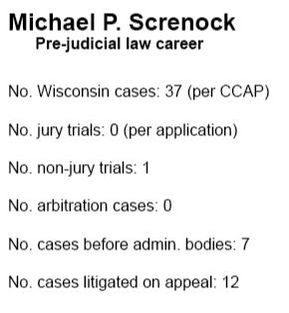

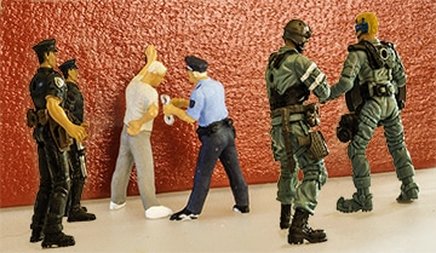
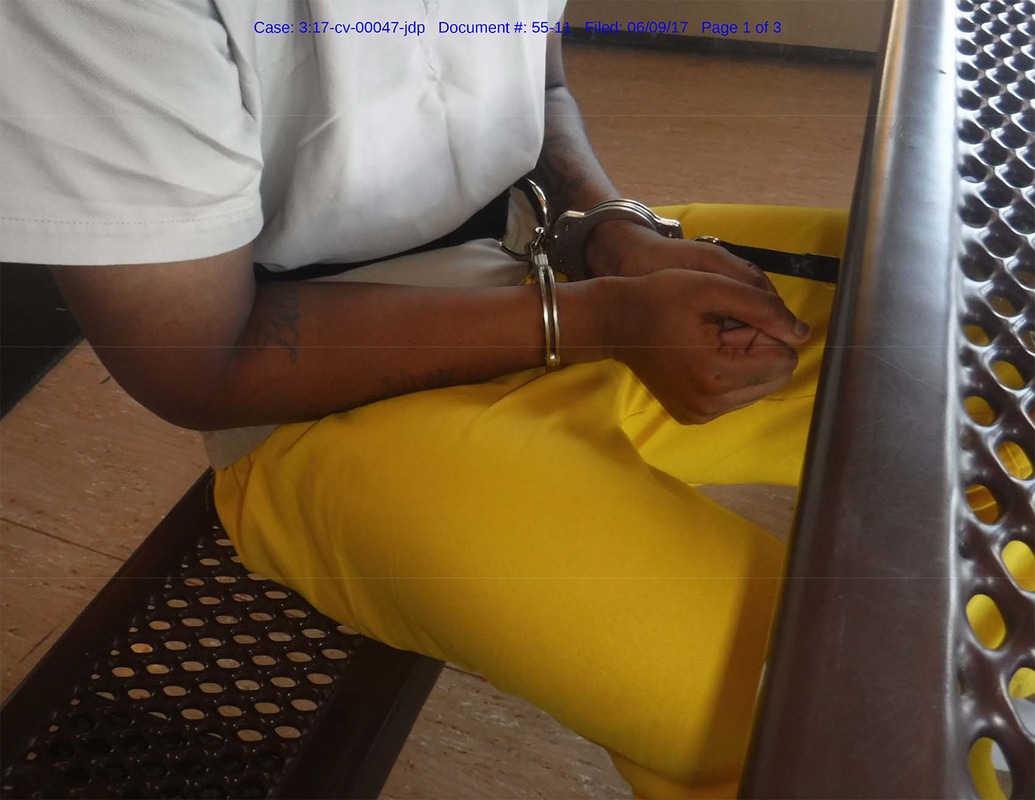
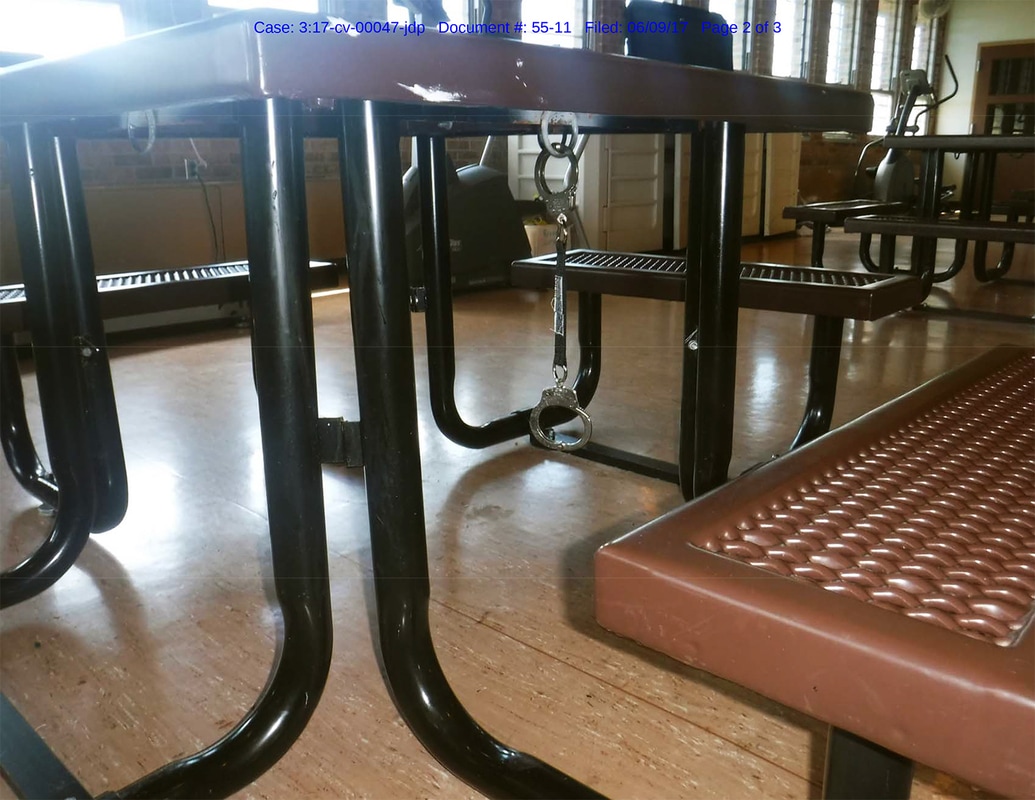
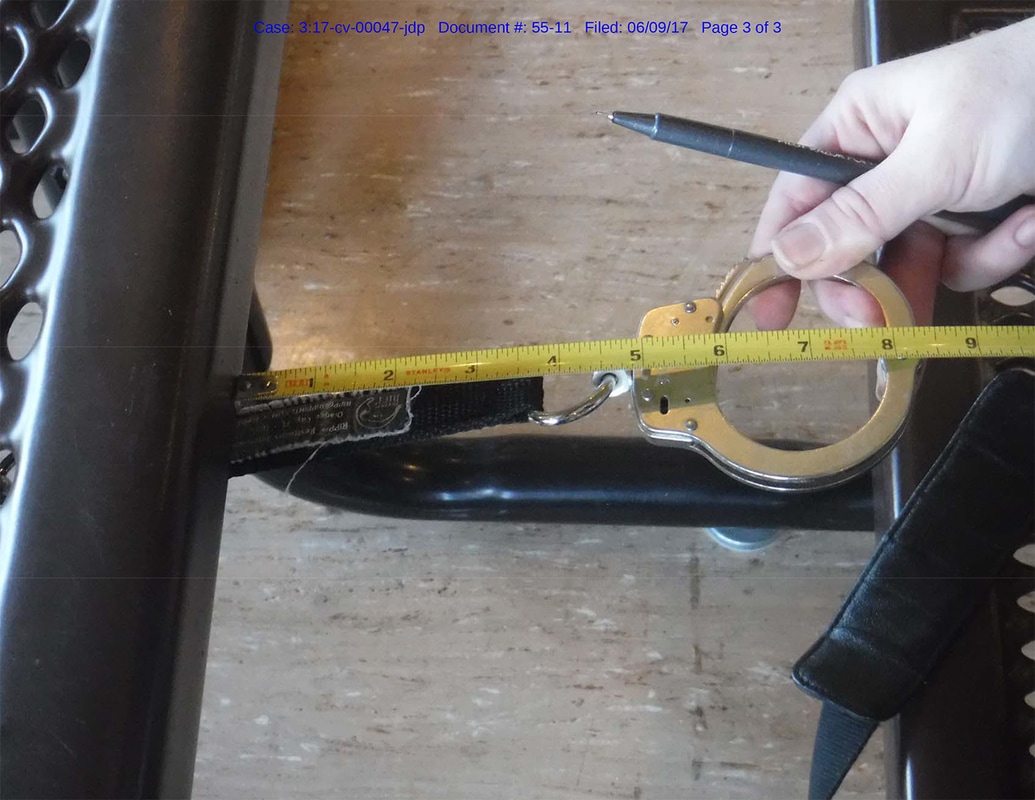
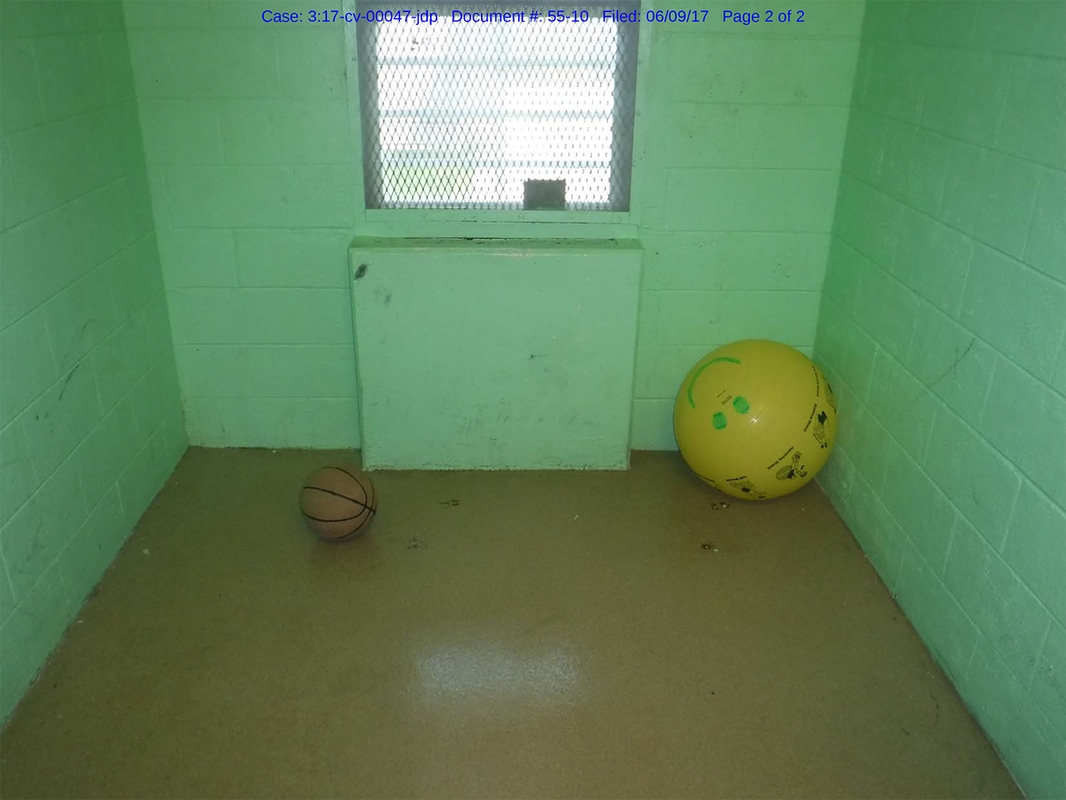
 RSS Feed
RSS Feed